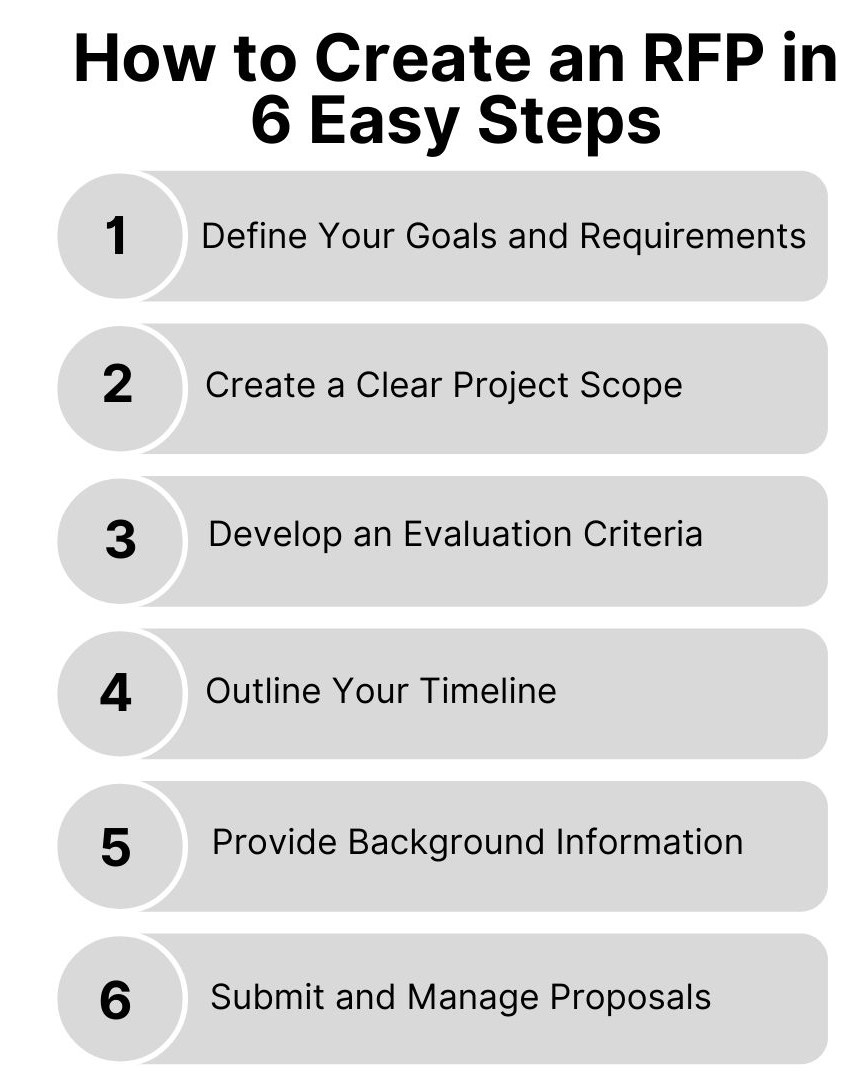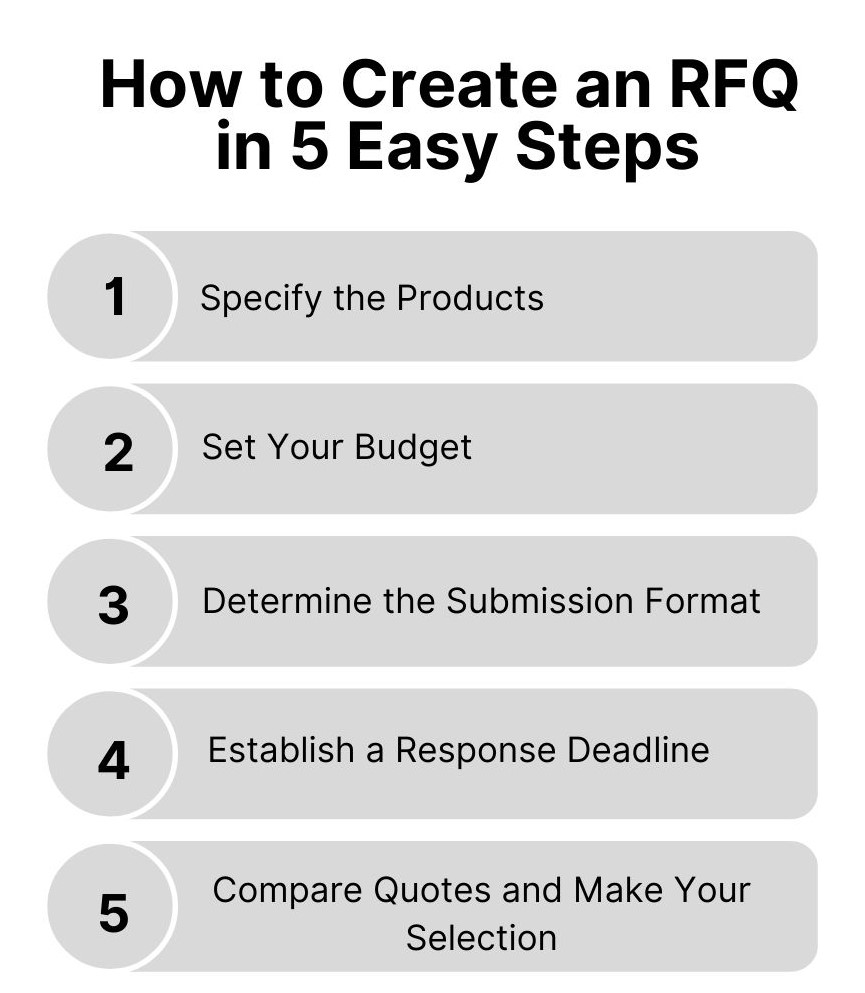In today’s competitive business world, finding the right suppliers and partners is essential for success. Businesses often use two primary methods to obtain goods or services: the Request for Proposal (RFP) and the Request for Quotation (RFQ). But how do you decide which process best fits your needs? This guide will explore the differences, benefits, and ideal scenarios for using each method, helping you make the right choice for your business.
Understanding the Basics: Request for Proposal vs Request for Quotation
Before diving into the specifics, let’s clarify what a request for proposal (RFP) and a request for quotation (RFQ) entail.
- Request for Proposal (RFP): An RFP is a document that businesses use when seeking vendors to provide complex solutions or services. It invites suppliers to propose solutions tailored to specific needs and often includes additional information like pricing, delivery timeframes, and value-added services. RFPs are commonly used when companies have broad requirements and need a vendor’s expertise to design or execute the best solution.
- Request for Quotation (RFQ): An RFQ, on the other hand, is typically used for straightforward purchasing where price is the main consideration. It’s a way for businesses to obtain detailed pricing from multiple vendors for a specific product or service. RFQs are ideal for situations where the specifications are clear and unchanging, allowing the business to compare pricing directly and select the most cost-effective option.
With these definitions in mind, let’s dive deeper into the scenarios where each option would be most effective.
When to Use an RFP (Request for Proposal)
An RFP is ideal when:
- The Solution Is Complex: RFPs are commonly used for large projects with complex requirements. For example, if a company is looking for a new software solution that integrates with existing systems, an RFP allows them to seek detailed solutions that address specific needs.
- Multiple Solutions Could Fit the Requirement: If there are different ways to achieve the desired outcome, an RFP allows vendors to present various solutions, helping the business choose the one that aligns best with its objectives.
- Decision Factors Extend Beyond Price: When the quality, customization, or vendor expertise are as important as the cost, an RFP is the preferred approach. The document allows companies to assess proposals based on factors like experience, references, and innovation.
- The Business Requires a Long-Term Partner: RFPs are often used when seeking a vendor for ongoing services, where relationship-building, collaboration, and flexibility are essential. For instance, a company seeking an outsourced IT partner would benefit from the comprehensive details provided in an RFP.
When to Use an RFQ (Request for Quotation)
An RFQ is a better choice when:
- The Requirements Are Clear and Specific: RFQs work well for straightforward purchases where there’s little ambiguity about what’s needed. For example, if a company needs a set quantity of office supplies, an RFQ will yield accurate pricing for a well-defined list of items.
- Price Is the Primary Consideration: When cost is the main factor, an RFQ simplifies the process. Vendors can provide straightforward quotes, enabling a quick price comparison and selection of the lowest bid.
- The Project Scope Is Limited: RFQs are ideal for single purchases or short-term needs where complex solutions aren’t necessary. For example, buying office furniture for a one-time setup is a great case for using an RFQ.
- A Shorter Timeline Is Required: Because RFQs are simpler to compile and evaluate, they generally take less time than RFPs. This makes them the better option for urgent purchases where cost and speed are top priorities.
Key Differences Between RFPs and RFQs
Here are some critical distinctions between a request for proposal and a request for quotation:
- Purpose: While RFPs aim to solicit solutions from vendors based on detailed needs, RFQs focus on obtaining precise price quotes for specified items or services.
- Complexity: An RFP typically involves more complex criteria and evaluation processes, while an RFQ is straightforward and centers on pricing.
- Content: An RFP includes various sections, such as company background, project scope, evaluation criteria, and more. An RFQ usually focuses only on item specifications, quantities, and pricing.
- Timeframe: Since RFPs involve detailed proposals and evaluation, they often require more time to execute. RFQs, being simpler, generally have shorter timelines.
- Vendor Involvement: RFPs invite vendors to demonstrate creativity and offer unique solutions. RFQs are purely transactional, seeking only the best price for a predetermined specification.
Steps to Create an RFP (Request for Proposal)
If you’ve determined that an RFP is the right choice, here are the steps to create one effectively:

- Define Your Goals and Requirements: Outline the project scope, objectives, and any special requirements. This information will help vendors understand what you’re looking for and propose appropriate solutions.
- Create a Clear Project Scope: Include a description of the services or products you need, along with specific details about functionality, quality, and performance expectations.
- Develop an Evaluation Criteria: Define the criteria you’ll use to assess proposals, such as pricing, experience, solution approach, and customer references.
- Outline Your Timeline: Set deadlines for proposal submissions, evaluations, and decision-making, and communicate these to vendors in the RFP.
- Provide Background Information: Share relevant details about your company, such as your mission, values, and project goals, to help vendors craft a tailored solution.
- Submit and Manage Proposals: Once the RFP is published, establish a system to track submissions and communicate with vendors, ensuring questions are addressed and deadlines are met.
Steps to Create an RFQ (Request for Quotation)
For straightforward purchases, an RFQ is generally simpler and faster. Here’s how to create an RFQ effectively:

- Specify the Products or Services Needed: Clearly outline each item or service, including quantities, specifications, quality requirements, and delivery expectations.
- Set Your Budget: While an RFQ is primarily focused on price, it’s helpful to know your budget. Some businesses include a target price range, so vendors understand any budget constraints.
- Determine the Submission Format: Specify how you’d like vendors to submit quotes, whether through email, an online portal, or another format.
- Establish a Response Deadline: Set a clear submission deadline to keep the process moving efficiently.
- Compare Quotes and Make Your Selection: Once you’ve received responses, evaluate them based on pricing, delivery timelines, and any other relevant criteria, then select the best fit for your needs.
Advantages of RFPs (Request for Proposals)
- Encourages Detailed, Customized Proposals: RFPs allow vendors to present comprehensive, tailored solutions that directly address your specific needs. Vendors can outline how their offerings align with your requirements, making it easier to assess which solution fits best. This customization often includes unique methods, technologies, and value-added services that add significant value to complex projects.
- Allows for Evaluation Beyond Pricing: With RFPs, you can consider multiple factors beyond just cost. RFPs are structured to evaluate proposals based on quality, innovation, experience, and alignment with your organization’s goals. This flexibility is ideal when you need a high-quality solution, specialized expertise, or innovative input, as it enables you to weigh proposals according to a broader range of criteria.
- Suitable for Complex Projects and Long-Term Partnerships: For projects with multiple requirements or those that will evolve over time, RFPs provide a format to foster long-term collaboration. The RFP process encourages vendors to demonstrate how they will support your business not only in the immediate project phase but also in the future. This helps you identify partners who are committed to your success and adaptable to changing needs.
Advantages of RFQs (Request for Quotations)
- Quicker and Simpler Process: RFQs are straightforward, focusing primarily on cost and specific requirements, which reduces the time and effort required for both parties. Since the process is simpler, you can complete it in a shorter timeframe, making it ideal for purchases where you need quick responses and immediate fulfillment. The faster pace also minimizes the administrative burden and keeps the focus on fulfilling your needs efficiently.
- Provides a Straightforward Price Comparison: An RFQ is designed for direct price comparison, giving you clear and concise quotes for well-defined products or services. This approach is helpful when price is the main criterion, as it allows you to quickly assess which vendor offers the best value for the specifications you need. It’s particularly effective for budgeting and planning since you can easily identify the lowest-cost options.
- Ideal for Standard Purchases with Clear Specifications: RFQs are best suited to procurement needs with little to no customization, such as buying standard goods or services with clear specifications. This clarity makes it easy for vendors to submit accurate quotes and for you to evaluate them with minimal ambiguity. For example, if you’re purchasing office supplies, raw materials, or simple services, an RFQ ensures that the bids meet specific criteria and simplifies the purchasing decision.
Choosing Between RFP and RFQ for Your Business
Selecting the right approach ultimately depends on your project’s nature, scope, and priorities. Use this quick decision guide:
- If the project is complex and requires a unique solution, go with an RFP.
- If you’re looking for standard products or services with price as the primary factor, choose an RFQ.
- When time and resources are limited, consider the simpler RFQ process.
- If your selection criteria go beyond price, such as quality or customization, an RFP is the better option.
Common Mistakes to Avoid
Here are some common mistakes to watch for:
- Vague or Incomplete Information: Both RFPs and RFQs should include all relevant details. Vague requirements can lead to misaligned proposals or quotes, resulting in delays or mismatched expectations.
- Setting Unrealistic Timelines: Allow vendors adequate time to respond, especially for RFPs, where more comprehensive proposals are expected.
- Focusing Only on Price: While cost is important, it’s essential to consider factors like quality, delivery timelines, and vendor reputation, especially with RFPs.
- Overlooking Communication: During the process, maintain open communication with vendors to clarify any questions and keep the timeline on track.
Final Thoughts on Request for Proposal vs Request for Quotation
Choosing between a request for proposal and a request for quotation isn’t always straightforward. The right choice depends on your project’s requirements, the complexity of the desired solution, and your evaluation criteria. For businesses looking to establish long-term vendor relationships, an RFP is often the best approach. For straightforward purchasing decisions, an RFQ is quicker and more cost-effective.
In both cases, clear communication, comprehensive details, and realistic expectations are key to finding the right vendor or partner. By carefully selecting the method that best fits your business needs, you’ll streamline the process, improve vendor responses, and ultimately make smarter purchasing decisions.
Did you find this article worthwhile? More engaging blogs and products about smart contracts on the blockchain, contract management software, and electronic signatures can be found in the Legitt AI. You may also contact Legitt to hire the best contract lifecycle management services and solutions, along with free contract templates.
FAQs on Request for Proposal vs Request for Quotation
What is the difference between an RFP (Request for Proposal) and an RFQ (Request for Quotation)?
An RFP is used for complex projects where businesses seek customized solutions from vendors, while an RFQ is used for straightforward purchases, focusing primarily on pricing for specific products or services.
When should I use an RFP instead of an RFQ?
Use an RFP when the solution is complex, multiple solutions could fit the requirement, and you need to evaluate factors beyond price, such as quality, vendor expertise, or long-term partnership potential.
When is an RFQ the better option?
An RFQ is ideal when the requirements are clear and specific, price is the main consideration, and the scope is limited. It’s also suitable for situations with a shorter timeline or when purchasing standard items.
What are the key advantages of using an RFP?
RFPs encourage detailed, customized proposals, allow evaluation beyond price, and are suitable for complex projects or long-term partnerships that require flexibility and collaboration.
What are the main advantages of using an RFQ?
RFQs offer a quicker, simpler process, provide a straightforward price comparison, and are ideal for standard purchases with clear specifications.
How do I create an RFP?
To create an RFP, define your goals, develop a clear project scope, set evaluation criteria, provide background information, and set a timeline. Make sure to establish a system for managing proposals.
How do I create an RFQ?
To create an RFQ, specify the products or services needed with detailed quantities and specifications, set your budget, establish a submission format, and set a response deadline.
What common mistakes should I avoid when issuing an RFP or RFQ?
Avoid vague or incomplete information, setting unrealistic timelines, focusing only on price, and failing to maintain open communication with vendors throughout the process.
How do I decide whether to use an RFP or RFQ for my business?
If the project requires a unique solution or long-term partnership, use an RFP. If you need standard products with a focus on price, or have limited time and resources, an RFQ is more suitable.
What factors should I consider when evaluating proposals from an RFP or RFQ?
For an RFP, evaluate proposals based on criteria such as price, quality, innovation, experience, and alignment with your company’s goals. For an RFQ, focus primarily on the price and delivery timelines.
